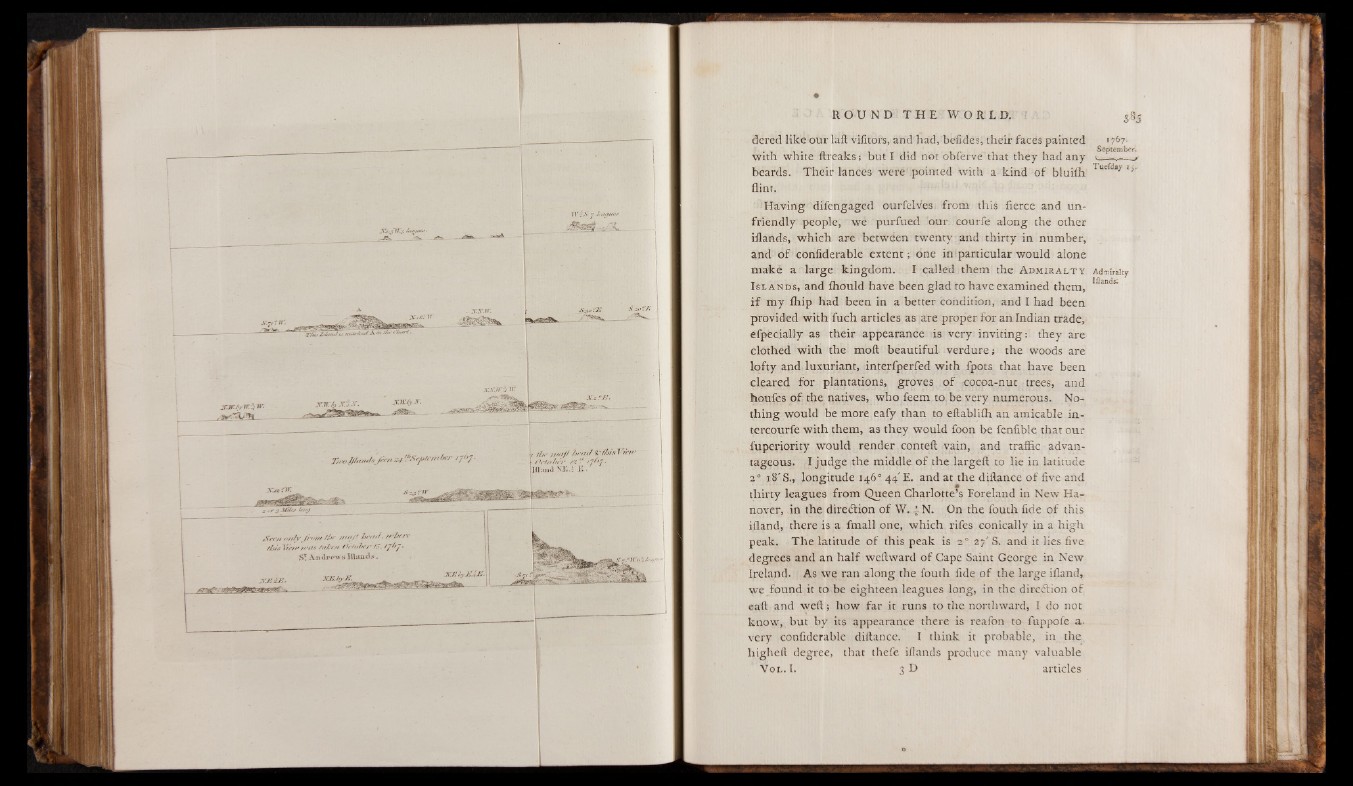
dered like our laft vifitors, and had, befidesi their faces painted
with white ftreaks; but I did not obferve that they had any
beards. Their lances were' pointed with a kind of bluiffi
flint.
Having difengaged ourfelves from this fierce and unfriendly
people, we purfued our. courfe along the other
iflands, which are between twenty and thirty in number,
and o f confiderable extent; one in particular would alone
make a large kingdom. I called them the A d m i r a l t y Admiralty
I s l a n d s , and ffiould have been glad to have examined them, flanas'
i f my fhip had been in a better condition, and I had been
provided with fuch articles as are proper for an Indian trade,
efpecially as their appearance is very inviting: they are
clothed with the moll beautiful verdure; the woods are
lofty and luxuriant, interfperfed with fpots that have been
cleared for plantations, groves o f cocoa-nut trees, and
houfes o f the natives, who feem.to.be very numerous. Nothing
would be more eafy than to eftabliffi an amicable in-
tercourfe with them, as they would foon be fenfible that our
fuperiority would render conteft vain, and traffic advantageous.
I judge the middle o f the largeft to lie in latitude
2° i8'S., longitude 146° 44' E. and at the diftance of five and
thirty leagues from Queen Charlotte’s Foreland in New Hanover,
in the direction of W. 4 N. On the fouth fide of this
ifland, there is a fmall one, which rifes conically in a high
peak. The latitude o f this peak is 2° 27'S. and it lies five
degrees and an half weftward of Cape Saint George in New
Ireland. As we ran along the fouth fide of the large ifland,
we found it to be eighteen leagues long, in the diredtion o f
eaft and we ft; how far it runs to the northward, I do not
know, but by its appearance there is reafon to fuppofe a.
very confiderable diftance. I think it probable, in the.
liigheft degree, that thefe iflands produce many valuable
V o l . I, 3 D articles
1767.
September.
Tuefday i j.